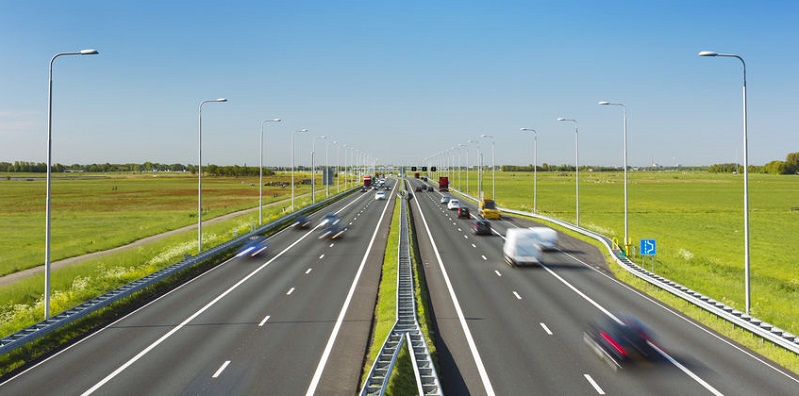Few would contend that Colorado’s highway speed limits should be returned to 15 mph, even if doing so could minimize the risk of auto accidents. Too-slow speeds of travel can also be risky and costly.
One safety agency has concluded that tens of thousands of deaths from traffic accidents are related to rising speed limits. In some cities, people are talking about lowering speed limits to make roads safer. Elsewhere, though, officials want to increase the speed limit.
25 Years of Research on Speeding
For over two decades, the Insurance Institute for Highway Safety (IIHS) has studied the relationship between speed limits and traffic deaths. In a recently updated report, IIHS concluded that increases in the speed limit are correlated with the loss of 37,000 in speed-related accidents over the past quarter century; as highway speed limits have increased, so have traffic fatalities.
“Each 5 mph increase in the maximum speed limit for a state has been associated with an 8.5% increase in traffic fatalities on interstates and freeways and a 2.8% increase on other roads.”
Although IIHS concedes that these are just averages, it is sounding the alarm about speed-related crashes. And it’s not the only organization doing so. The Governors Highway Safety Association (GHSA) is publicizing the IIHS study to further the discussion on whether higher speed limits are worth the risk.
GHSA also linked to an article by FairWarning Reports on how high the legal speed limit is in various states:
- 41 states currently have speed limits of 70 mph or higher.
- Six states have a speed limit of 80 mph.
- Texas has the highest speed limit in the U.S., with drivers on some roads allowed to drive 85 mph.
“About 10,000 people a year die in speed-related crashes,” IIHS President David Harkey said in an interview with Forbes. He believes that the number can be reduced “through effective, high-visibility enforcement and traffic engineering measures” and reasonable speed limits.
IIHS says traffic safety must continue to be the top priority. “Driving 70 instead of 65 saves a driver at best 6½ minutes on a 100-mile trip,” according to IIHS Vice President Charles Farmer. “Before raising speed limits, state lawmakers should consider whether that potential time saving is worth the additional risk to lives.”
Disagreement About Effects of Higher Speed Limits
Not all students of this subject agree that higher speed limits must increase the risk of accidents. For example, a study conducted in 2000 by the Automobile Club of Southern California, an AAA affiliate, considered the impact of higher speed limits on “crash rates (per mile drove) in California after the maximum speeds were increased in December 1995 and in April 1996.”
Because some drivers might have altered their routes in response to the now-higher speed limits, authors Steven Bloch and Dave DeYoung looked at accidents throughout the state, not just on roads subject to higher speed limits. Finding no change in the rate of fatal accidents and only a temporary increase in less serious crashes, the authors suggested a few possible reasons for the counterintuitive finding:
- To the extent that many drivers had already been exceeding the speed limit, actual speeds might have changed only a little after limits were raised.
- Higher speeds might have redirected traffic to safer lanes. “It’s possible,” said Bloch, “that as speed limits rose, traffic flowed from more dangerous roads to larger, divided highways, which are much safer.”
- After the speed limit was increased, police might have spent more time pursuing genuinely reckless drivers, less time pursuing renegades who were merely exceeding 55 mph.
Even if higher speed limits were always correlated with higher per-road-mile crash rates and higher mortality, the optimal speed limit would not be obvious. Few would contend that highway speed limits should be returned to 15 mph, even if doing so could minimize the risk of auto accidents. Too-slow speeds of travel can also be risky and costly.
Colorado Among States Boosting Speed Limit
Speed limit laws have been around at least since 1901. Connecticut limited motor vehicles to 12 mph on city streets and 15 mph on country roads. Technology got better and speeds got faster. Eventually, the federal government tried to curb the speeds. In the early 70s, in large part because of the energy crisis, it imposed a nationwide spead limit of 55 mph.
In 1995, though, states could once again set their own maximum speeds. Colorado’s interstate speed limit is now 75 mph. Utah and Wyoming have 80 mph limits. Within any state, speed limits vary quite a bit. For instance, on the winding mountain roads of Colorado, vehicular velocity is limited to 20 mph; that of open mountain highways is limited to 40 mph.
People disagree about which speed limits are ideal. Some cities plan to decrease the speed limit even as nine states plan to increase the maximum speeds that cars and trucks may travel on some roads.
If you or a loved one has been injured in an accident, contact Dan Rosen at (303) 454-8000 or 800-ROSEN-911 to schedule your free initial consultation with an experienced personal injury attorney

